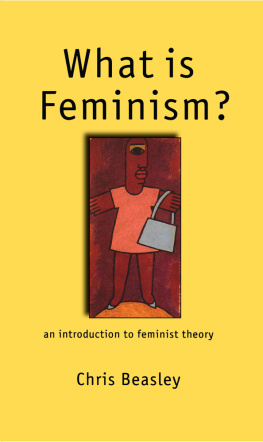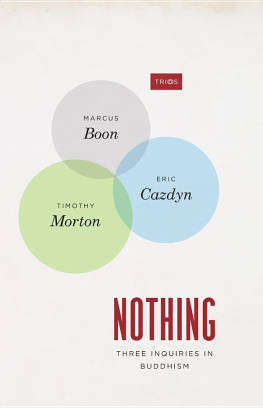The International Library of Sociology
INDUSTRIAL INJURIES INSURANCE
Founded by KARL MANNHEIM
The International Library of Sociology
THE SOCIOLOGY OF WORK AND ORGANIZATION
In 18 Volumes
| I | Apprenticeship | Liepmann |
| II | Industrial Disputes | Eldridge |
| III | Industrial Injuries Insurance | Young |
| IV | The Journey to Work | Liepmann |
| V | The Lorry Driver | Hollowell |
| VI | Military Organization and Society | Andrzejewski |
| VII | Mobility in the Labour Market | Jeffreys |
| VIII | Organisation and Bureaucracy | Mouzelis |
| IX | Planned Organizational Change | Jones |
| X | Private Corporations and their Control (Part One) | Levy |
| XI | Private Corporations and their Control (Part Two) | Levy |
| XII | The Qualifying Associations | Millerson |
| XIII | Recruitment to Skilled Trades | Williams |
| XIV | Retail Trade Associations | Levy |
| (The above title is not available through Routledge in North America) |
| XV | The Shops of Britain | Levy |
| XVI | Technological Growth and Social Change | Hetzler |
| XVII | Work and Leisure | Anderson |
| XVIII | Workers, Unions and the State | Wootton |
INDUSTRIAL INJURIES INSURANCE
An Examination of British Policy
by
A. F. YOUNG
First published in 1964 by
Routledge
Reprinted 1998, 2000, 2002
by Routledge
2 Park Square, Milton Park, Abingdon, Oxon, OX14 4RN
Transferred to Digital Printing 2007
Routledge is an imprint of the Taylor & Francis Group
1964 A. F. Young
All rights reserved. No part of this book may be reprinted or reproduced or utilized in any form or by any electronic, mechanical, or other means, now known or hereafter invented, including photocopying and recording, or in any information storage or retrieval system, without permission in writing from the publishers.
The publishers have made every effort to contact authors/copyright holders
of the works reprinted in The International Library of Sociology. This has not been possible in every case, however, and we would welcome correspondence from those individuals/companies we have been unable to trace.
British Library Cataloguing in Publication Data
A CIP catalogue record for this book
is available from the British Library
Industrial Injuries Insurance
ISBN 0-415-17677-8
The Sociology of Work and Organization: 18 Volumes
ISBN 0-415-17829-0
The International Library of Sociology: 274 Volumes
ISBN 0-415-17838-X
Publisher's Note
The publisher has gone to great lengths to ensure the quality of this reprint but points out that some imperfections in the original may be apparent
CONTENTS
The schedule. Pneumoconiosis and byssinosis:
Seven principles of the scheme.
The Holman Gregory Committee 1920. Sir Arnold Wilson and Professor Levy 1939.
: Ministry officials; appeal tribunals; the Commissioner. Medical examinations. Medical boards. Medical appeal tribunals
; the attractions of a non-funded scheme
The doctrine of care, and the concept of negligence.. Defences: accident inevitable; trespasser; beyond scope of his authority; contributory negligence
Defences
ACKNOWLEDGEMENTS
MANY have helped in the development of this work, and to them all I want to express my sincere gratitude; especially to Mr. G. H. F. Mumford and Mr. K. C. Clarke, Clerks to the Southampton Magistrates, and to Mrs. P. Dunn, Mrs. J. Grubb, Mrs. I. Bason and Mrs. P. Powell for their tolerance and patience in typing the script; and to Miss D. Marshallsay and Miss O. Simpson for their help in the index and in proofreading.
INTRODUCTION
THIS is a study of policy; of why and how the United Kingdom has developed financial provisions for workers injured in the course of their employment. It is an inquiry not so far undertaken in Britain since Sir Arnold Wilson and Professor Levy published their monumental book on Workmen's Compensation in 1939. It was the passion and erudition of their writing that provided the impetus for this further investigation to see what changes, if any, had occurred since the abolition of the old workmen's compensation law, and the initiation of the new industrial injuries legislation.
In launching such a study it was necessary to impose certain limitations. For instance, a mass of legal and administrative items was available in the laws that were passed and the regulations that were promulgated. If the general principles of policy were not to be buried under a load of detail, it was necessary to confine the analysis to those matters affecting the trends of policy alone. Major modifications, such as the decision to extend disablement benefit to the very earliest stages of pneumoconiosis, were added to the text, but to include a survey of the vast array of regulations and Commissioners' decisions seemed pointless. Nor was an examination of the position in the coal mines undertaken, not because it was unimportant, nor tragically productive of accident and disease, but because its inclusion did not appear materially to alter the principles involved, nor the general picture of the provision for injured workers. As for the material used to illustrate the study, it was as recent as the exigencies of publication allowed. The time span since 1948, when the industrial injuries contributory scheme began, has been long enough to demonstrate the general trends, and complete enough to provide adequate information within a reasonable perspective. Unless and until a fundamental change is brought to the whole scheme, the weaknesses and strengths of the policy will in all probability remain much as they have emerged in the present investigation.
Though the provision of cash benefit for the injured worker is the core of the study, there were other important factors to consider. Insurance benefit is paid because men and women suffer accidents and diseases in the course of their employment, and some indication of the extent of occupational illness in those industries covered in Britain by the Factory Acts became a vital part of the evidence. Thus Part I is concerned with factory accidents and diseases, and the voluntary and statutory efforts to mitigate the dangers and promote safety.
, on the other hand, deals with a very different aspect of industrial injury, but one that is intimately associated with the future of the injured man, with his insurance benefit, and with his employer. An appreciation of the ancient right to seek alternative remedies could not be omitted from a work of this nature, and accordingly an attempt has been made to elucidate the problem, not so much from the legal angle, but from the viewpoint of social policy. In doing so, the case of employers, criminally liable for defection in their statutory duties, has received comment but no analysis, since the book was not primarily concerned with them. Criminal liability is an important problem, and further inquiry into the whole conception of punitive action against the negligent demands urgent attention.











